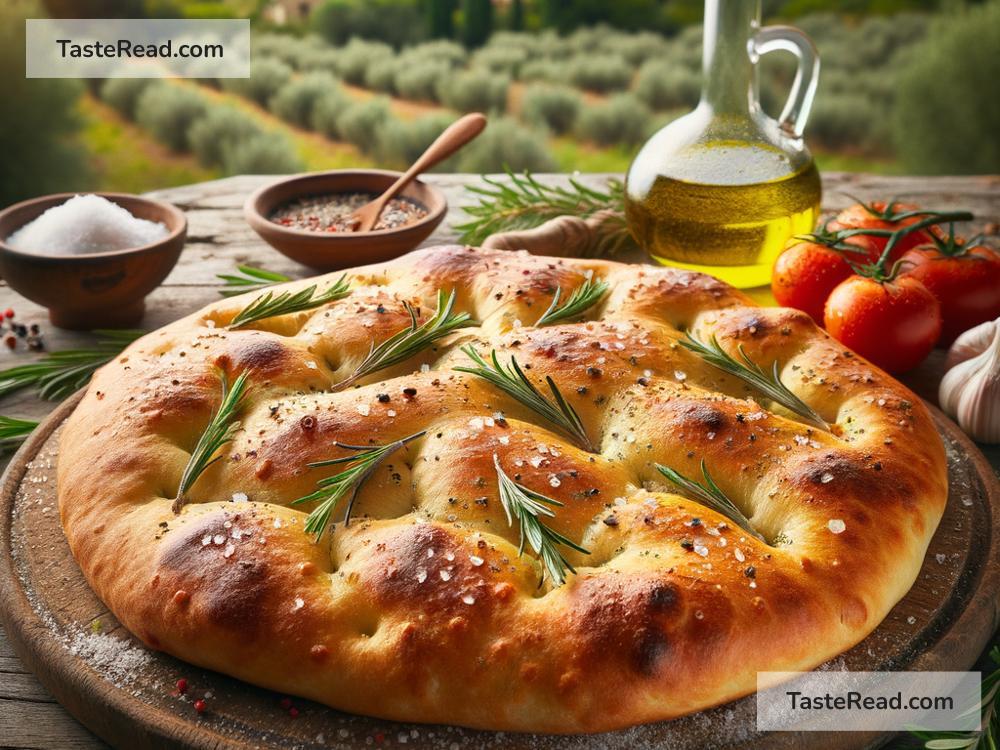The Origins of the Italian Focaccia: A Delight from the Past
Who doesn’t love bread? It’s one of the oldest and simplest foods in the world, and nearly every culture has its own version of this staple. In Italy, focaccia is one of the most beloved types of bread. Soft, fluffy, and richly flavored with olive oil, focaccia feels like a warm hug in every bite. But have you ever wondered where this tasty bread comes from? Let’s explore the fascinating history and origins of Italian focaccia.
What Is Focaccia?
Focaccia is a flatbread traditionally made with simple ingredients like flour, water, yeast, salt, and olive oil. It’s often topped with herbs, garlic, olives, tomatoes, or other savory ingredients, making it incredibly versatile and flavorful. Focaccia has a slightly crispy crust but stays soft and airy on the inside. It’s commonly served as an appetizer, side dish, or snack and is perfect for dipping into soups or olive oil mixtures.
In many ways, focaccia resembles pizza crust, but it’s thicker and has less topping compared to a pizza. While pizza is often associated with Naples, focaccia is deeply rooted in northern Italy, especially the region of Liguria. The city of Genoa, located in Liguria, is famous for its version of focaccia, known as focaccia di Genova.
Ancient Beginnings
The story of focaccia dates back thousands of years, long before Italy even existed as a unified country. Historians believe focaccia’s origins can be traced to ancient civilizations, possibly as far back as the Etruscans or ancient Greeks. Early versions of focaccia were made on stone ovens or over open flames, using simple ingredients like grain flour and water.
The Romans also had a version of flatbread called panis focacius, which means “bread baked on the hearth.” The Latin word “focus” refers to the fireplace or hearth where food was prepared, giving the bread its name. Unlike modern ovens, Roman households used communal fires or clay stoves, making flatbreads like focaccia convenient and easy to bake.
Roman cooks would often flavor the bread with olive oil and herbs, just like today’s focaccia. It was loved for its simplicity and portability, making it a popular food for soldiers and travelers. As the Roman Empire expanded across Europe and the Mediterranean, flatbreads became part of various traditions in different cultures.
Focaccia in Medieval Italy
After the fall of the Roman Empire, focaccia remained a staple of Italian cooking, especially in northern Italy and coastal regions like Liguria. During the Middle Ages, focaccia was often baked in communal ovens in villages, where people would gather to prepare their food.
It was considered a peasant’s bread at the time because of its simplicity and affordability. Farmers and villagers used whatever ingredients were available to them—olive oil, rosemary, coarse salt, and wheat flour—to make a filling, nourishing meal. This rustic charm is still one of the reasons why focaccia is so loved today.
Liguria, with its abundant olive groves and Mediterranean herbs, became the heart of focaccia production. Olive oil was essential not just for flavor but also for preserving the bread’s freshness. Focaccia began to develop regional variations, with some versions adding ingredients like cheese, onions, or anchovies to give each loaf a unique twist.
A Bread of Tradition
By the Renaissance period, focaccia had become more than just food—it became part of cultural traditions. In Liguria, focaccia was often served at weddings or special ceremonies. Bakers would make sweet or savory versions of the bread depending on the occasion.
One particularly interesting tradition in Genoa involved dipping focaccia in wine as part of breakfast. Generations of Italians carried on this practice, enjoying the bread dunked in a glass of red or white wine—a simple but satisfying start to the day.
Religious customs also played a role in the history of focaccia. For example, during Easter celebrations, some bakers prepared special versions of focaccia filled with symbolic ingredients like eggs or cheese. These variations were meant to honor the season and bring families together.
Focaccia Around the World
As Italian families immigrated around the globe, they brought their recipes and traditions with them. Focaccia gained international popularity, becoming a favorite in bakeries and restaurants everywhere. Today, you can find focaccia paired with soups, salads, sandwiches, or enjoyed on its own with a drizzle of olive oil.
Modern bakers have experimented with toppings and flavors, creating endless possibilities for focaccia. Some versions include caramelized onions, sun-dried tomatoes, pesto, or even sweet ingredients like honey and fruit. Despite the innovations, the heart of focaccia—the simplicity of flour, olive oil, and salt—remains unchanged.
A Taste of History
In every bite of focaccia, there’s a piece of history. From ancient Rome to the streets of Genoa, focaccia has traveled through centuries, carrying tradition and flavor to kitchens around the world. Its humble beginnings remind us that the best foods don’t have to be complicated—they just need to bring people together.
So, the next time you enjoy a slice of warm focaccia, think about the generations before you who gathered around hearths, shared meals, and created memories over this simple yet delicious bread. Focaccia is more than just food; it’s a symbol of community, tradition, and the timeless love for good ingredients. How wonderful is that?


